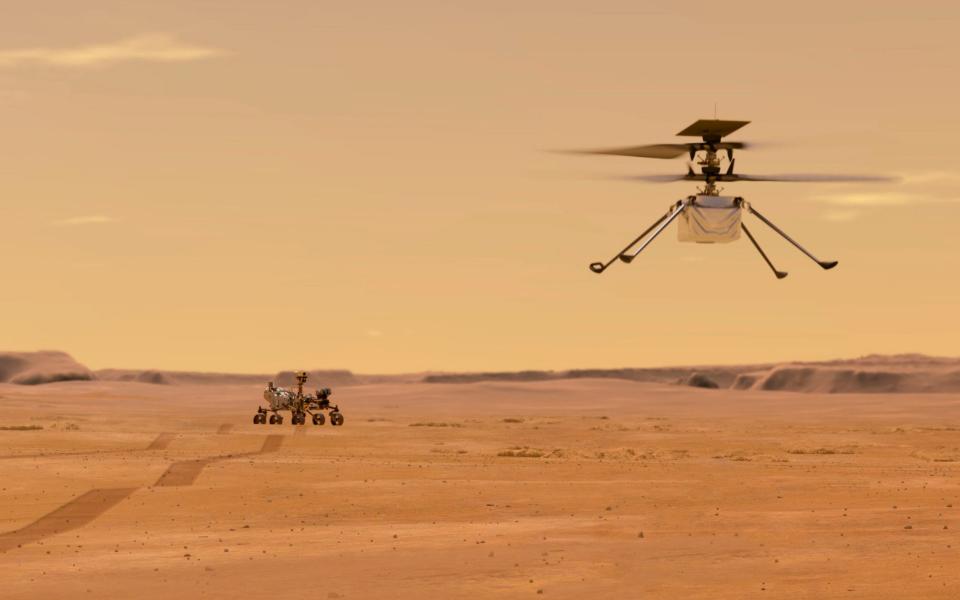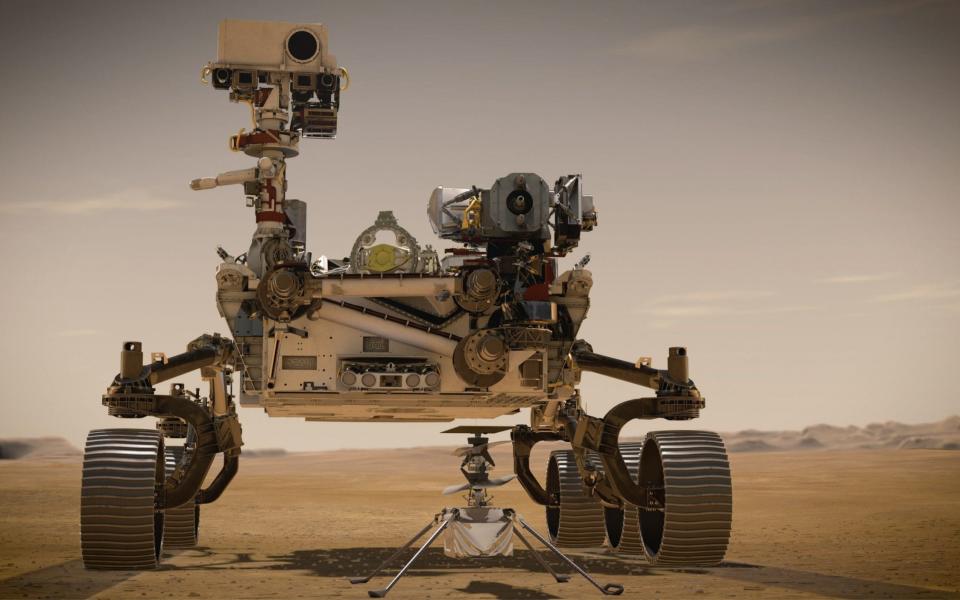Nasa prepares to fly first space helicopter on Mars

Nasa is preparing to fly the first drone on Mars, more than 100 years since the first powered flight on Earth.
Ingenuity, the small helicopter-like device, will land on the red planet on Thursday as part of the payload being carried by the Perseverance rover.
The vehicle is intended to demonstrate technologies needed for flying in the Martian atmosphere. If successful, these technologies could enable other advanced robotic flying vehicles that might be included in future robotic and human missions to Mars.
While it has been dubbed a helicopter by the US space agency, Ingenuity bears more similarities with small drones.
The 1.8kg aircraft will be tasked with traversing the Martian atmosphere, which is just 1pc the density of Earth’s. Ingenuity’s blades are much larger than its domestic counterparts and spin around 2,400 revolutions per minute, which is about five times faster than normal.
Mars’ reduced gravity – a third of that on Earth – will act as some aid to get it airborne.

The aircraft sits on four feet and boasts four carbon-fibre blades. It also has two cameras, as well as a host of computers and navigation sensors. It also uses an array of solar cells to recharge its batteries, which will help it keep warm on cold Martian nights.
Nasa is plotting five flights of varying difficulty over a month-long period once it lands with the drone set to fly as high as 15 feet and as far as 160 feet. The vehicle will fly autonomously due to difficulties around controlling it from range with a joystick.
Nasa describes Ingenuity's mission as a "technology demonstration": a project that seeks to test a new capability together with the astrobiology mission of Perseverance.
If it's successful, however, it "basically opens up a whole new dimension of exploring Mars," said Bob Balaram, Ingenuity's chief engineer.
"The Wright Brothers showed that powered flight in Earth's atmosphere was possible, using an experimental aircraft," said Håvard Grip, Ingenuity’s chief pilot at NASA's Jet Propulsion Laboratory in Southern California. "With Ingenuity, we're trying to do the same for Mars."

Nasa said the project started out six years ago as an “implausible prospect”.
MiMi Aung, the Ingenuity project manager at Nasa’s Jet Propulsion Laboratory in Southern California, said the team behind the helicopter had been “doing things that have never been done before”.
“We faced many challenges along the way that could have stopped us in our tracks,” she said.
“We are thrilled that we are now so close to demonstrating – on Mars – what Ingenuity can really do.”
